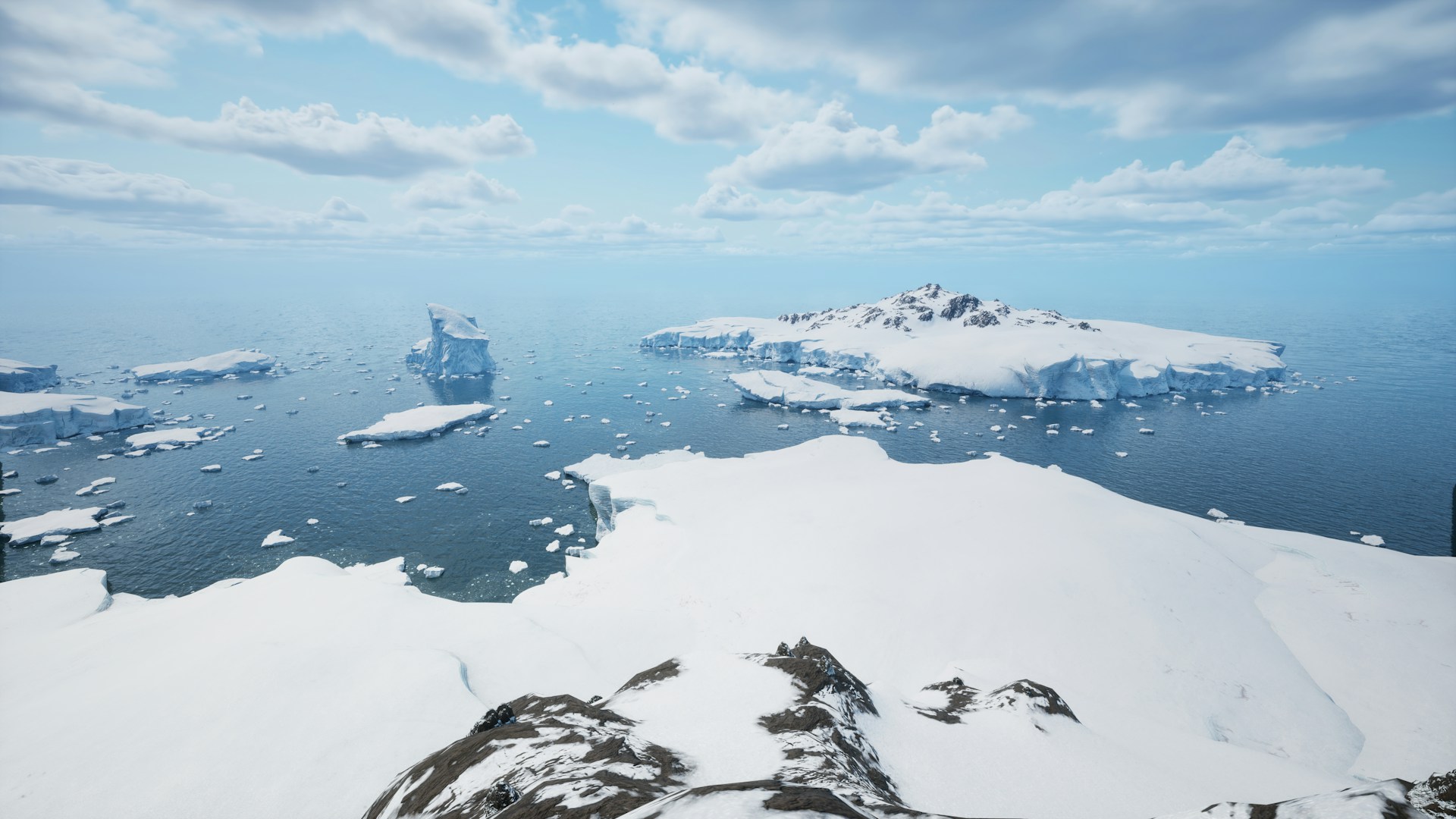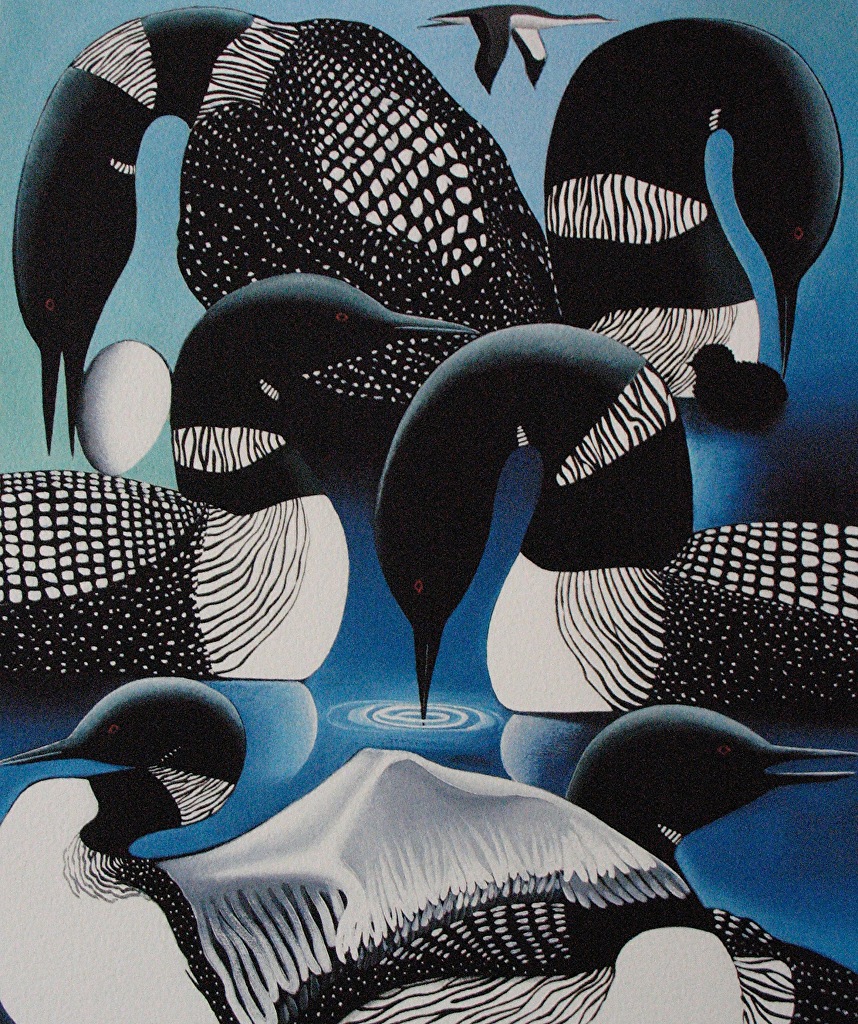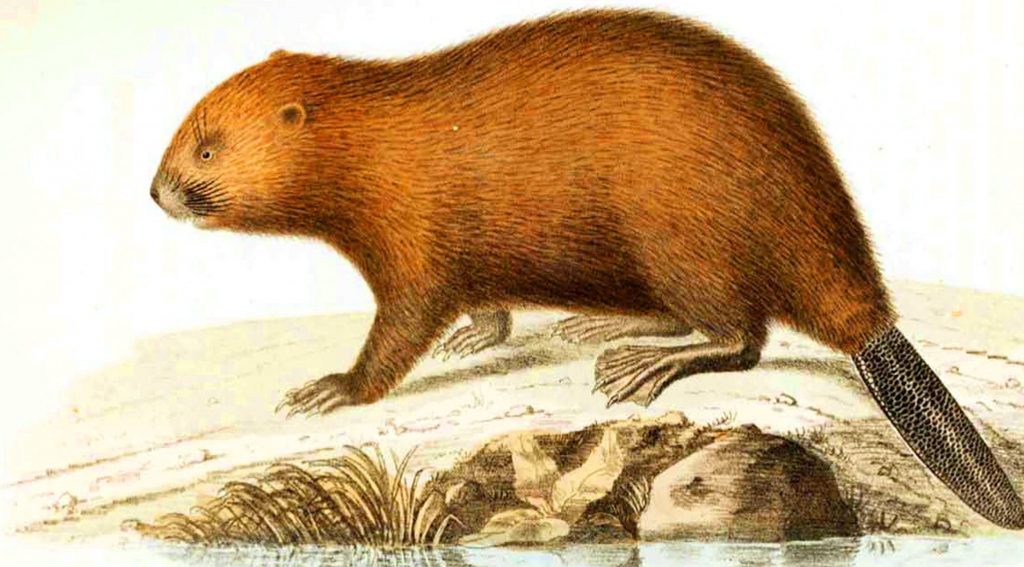Negotiating Fluidity
This piece is adapted from Entwined: Dispatches from the Intersection of Species by Bridget A. Lyons (Texas A&M University Press, 2024), and includes material previously published in The Common and the US Fish and Wildlife Service blog. Used with permission.
I had been looking forward to my time in the Arctic National Wildlife Refuge since a cheery government employee called to tell me I had been granted a Voices of the Wilderness artist’s residency. She asked me if I wanted to accompany a group of biologists to this rugged and remote parcel of land I first heard about as a teenager, when I spent the summer of 1989 hiking and kayaking in Alaska. With no hesitation whatsoever, I bought a ticket to Fairbanks and blocked out a two-week chunk of August.
An hour into our six-day research trip, however, I had already begun to feel both a mind-bending disorientation and a disturbing complicity.
“Here? They build nests here?” I exclaim. After some video-game-like high-speed iceberg avoidance, we emerge into a zone of open water and land at our first gravel bar. I look in astonishment at a flat, featureless, and lonely landform composed of nothing more than an accumulation of half-dollar-sized rocks. This is the kind of terrain where female common eiders—the migratory waterfowl we’re here to study—build their nests.
“She’s sitting on her eggs—right up there, by that group of glaucous gulls.” Will stands at the console of our boat, peering through his binoculars.
“Okay. Noose or net?” Elyssa asks from her position in the back of the other Zodiac.
“Noose, I think. This island is too narrow for the net. If I approach from the lagoon side, I think I can get her.”
“Cool. Bridget, can you pass the noose pole over to Will? And grab the banding kit.”
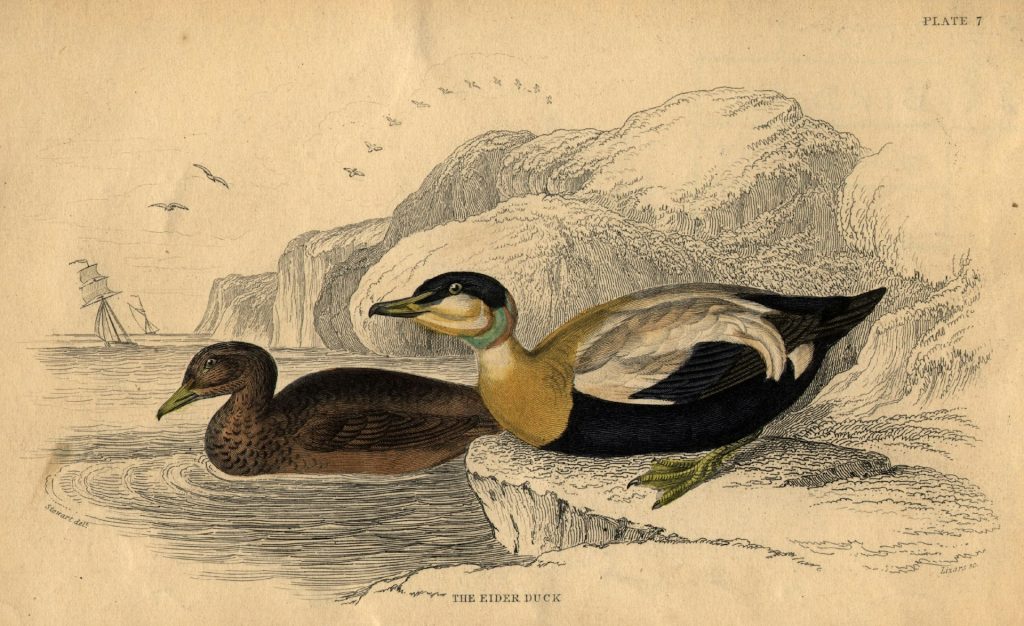
Elyssa Watford, Will Weise, and their U.S. Fish and Wildlife Service crew spend their summers looking for common eider nests. Their mission is to gather data about female eiders’ nest-site selection and the birds’ physiological responses to their nesting choices. Although I’m technically a “visiting artist,” I’m really just an extra set of hands and eyes. Only fifteen hundred or so people experience this 19.5-million-acre preserve every year. I’m thrilled to be one of them—especially one that has the potential to do some good, to further our understanding of this species and the environment it occupies—so I’m more than willing to do whatever grunt work is assigned to me.
After ten minutes of motoring, I’ve been transported from the no-nonsense, nuts-and-bolts process of data collection—the world of boundaries, boxes, measurements, and thresholds—to the borderless, oscillating iceberg dreamscape. I peer out from behind my polarized sunglasses, squinting at the fuzzy conjunction of water and land. At 70 degrees north latitude, where the world hovers between liquid and solid states, the horizon is not a line but a zone.
Quantum physicists might call it a field of probability. The land and sea collide with the sky somewhere in the range of my sight, but unearthly mirages make it impossible to determine exactly where and when that meeting occurs.
I’ve seen mirages before, in the desert Southwest, when the asphalt heats up and ripples my windshield view. The illusion lasts for a minute or two, then my conventional reality reasserts itself, and the highway falls back into place. Arctic mirages are altogether different. Every visible landmark—hillock, ship, iceberg, building—appears to float untethered in the sky. No matter how fast we go, no matter how close we get to these objects in our sight, they resist settling back into their expected arrangement. I gaze at the weird and warbly horizon until I can no longer tolerate its oddity.
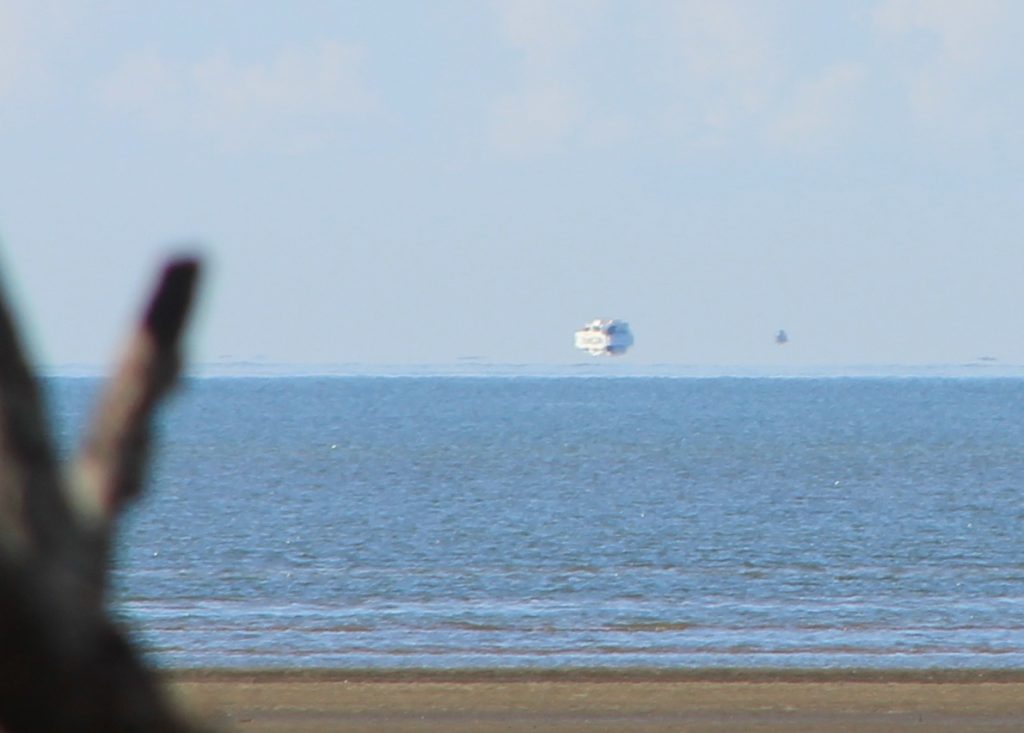
Fata Morgana is the lyrical term used to describe mirages that occur at extreme latitudes like northern Alaska’s—mirages that distort objects so drastically they become unrecognizable. The phrase has a medieval ring to it because of the reference to Morgan La Fay, infamous sorceress, student of Merlin, and half-sister to King Arthur. She was said to lure sailors to their deaths with visions of ghost ships and phantom landmasses.
This optical illusion requires the presence of a thermal inversion, where the temperature of the air close to Earth is colder than the temperature of the air above it—the opposite of what is normally the case. It also requires the existence of an “atmospheric duct,” a horizontal layer that traps light waves, causing them to follow Earth’s curvature rather than travel linearly. Some waves are reflected, some are refracted, and some are focused. The process distorts, displaces, and inverts images in ways similar to a prism or a cut-glass pendant in a sunny window.
On the Beaufort Sea, conditions are ideal for the production of Fata Morgana. The preponderance of ice keeps the temperature of Earth’s surface uniformly low while the brightness of the sun warms the air above it. The temperature affects the light, and the light affects my vision.
My vision is the sense I rely on to make sense of these peculiar surroundings. It’s unnerving to think that it might not be trustworthy.
Nearly everyone knows that sea ice in the Arctic is on the decline. Many of us have seen pictures of polar bears stranded on isolated floes, and some of us may have heard that sailing the infamous Northwest Passage has gotten substantially easier. The entire nine-hundred-mile route from the Beaufort Sea to Baffin Island was ice-free for the first time in 2007, and in 2016, the first cruise ship successfully navigated the entire journey.
Sea ice has always undergone some melting during the summers when the sun is most powerful. How much melting occurs is directly related to how much sunlight it reflects. Because of the ice-albedo effect, about half of the solar radiation that falls on sea ice is radiated back into the atmosphere. The other half is absorbed. While this absorption rate is less than that of ocean water, it’s enough to liquefy the ice.
If sea ice is blanketed with snow—a highly reflective substance—it absorbs less solar radiation and takes longer to melt. If that snow melts, however, the puddles of water that remain absorb additional heat. The more heat the water absorbs, the more it melts the sea ice, producing more water—which in turn absorbs more heat, which produces more water. You can see where this is going.
Scientists call this a positive feedback loop—a phenomenon in which changes to a system are amplified, increasing instability. Sea ice melting is a quintessential example of this, and it’s accelerating dramatically in the Arctic right now.
Back in the boats on our final high-speed glacier-dodging run to Kaktovic, my brain soon tires—first from attempting to force the elements into the orderly arrangement my brain prefers, then from the process of relinquishing control. I gradually let myself slip into the psychedelic reality of Beaufort Sea boating once more. As disorienting and disruptive as my petroleum-powered space-time travel may be, I have come to wonder if the slippery scene around me might be a preview of our immediate future in a rapidly warming world.
Quantum physics has revealed that nothing has ever really been separated from anything else, although our collective Fata Morgana—the perspective that sees bordered nations, individual species, and isolated ecosystems—tricks us into thinking otherwise. We—and by we, I mean human beings, nonhuman beings, nonsentient beings, and even the forces we cannot see or understand—are all inextricably entwined, we are told. Like it or not, our thoughts and behaviors are waves that interfere with the billions of other ripples we swim through.
As town comes into sight, my unreliable eyes have lifted the giant dome of the old DEW station up and off the surface of Earth. Thanks to Fata Morgana, even the largest and most expensive structure in town has been uprooted and subjected to renegotiation. While the motor behind me thrums, the level in the gas tank ahead of me plummets, and our emissions rise to join the canopy of greenhouse gas molecules that keep in our planet’s heat, it occurs to me that this word—renegotiation—is somehow critical to my understanding of this place, this planet.
We could renegotiate our relationships—with each other, with the land, with the ice, with the eiders. We could also renegotiate the way we see the world by seeing the whole instead of the parts. We could choose to act as though we were strands woven into an exquisite multidimensional artwork—one that has never before existed in this form and will never look exactly the same again. We could unite under a planetary flag that represents all global residents, human and nonhuman alike.
Maybe this is the first step: acknowledging that our current everyday reality is an unsustainable illusion. When we can see through new eyes, perhaps we’ll see new solutions. Or perhaps we’re stuck with a species-centric vision, sharpened by hundreds of thousands of years of natural selection favoring human dominance. I don’t know.
What I do know—or hope—is that radical challenges to our established perspectives—ones that, like the Arctic landscape, force us to negotiate the discomfort and disorientation of fluid boundaries—might offer some kind of way through. Or over. Or around. Or beyond.
“Maybe this is the first step: acknowledging that our current everyday reality is an unsustainable illusion. When we can see through new eyes, perhaps we’ll see new solutions. Or perhaps we’re stuck with a species-centric vision, sharpened by hundreds of thousands of years of natural selection favoring human dominance.”
The Texas A&M University Press is happy to grant a one-time permission for Kosmos Journal to reproduce a short selection of Bridget A. Lyons’s Entwined: Dispatches from the Intersection of Species.



